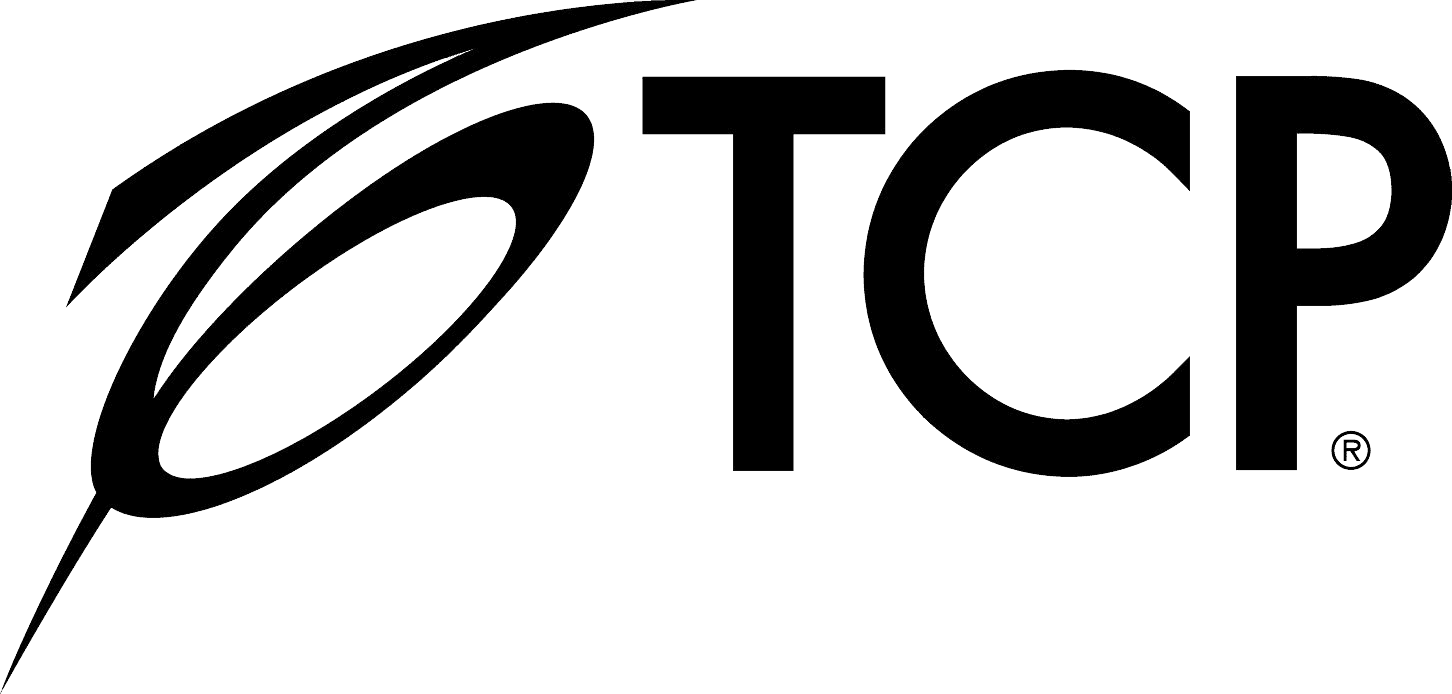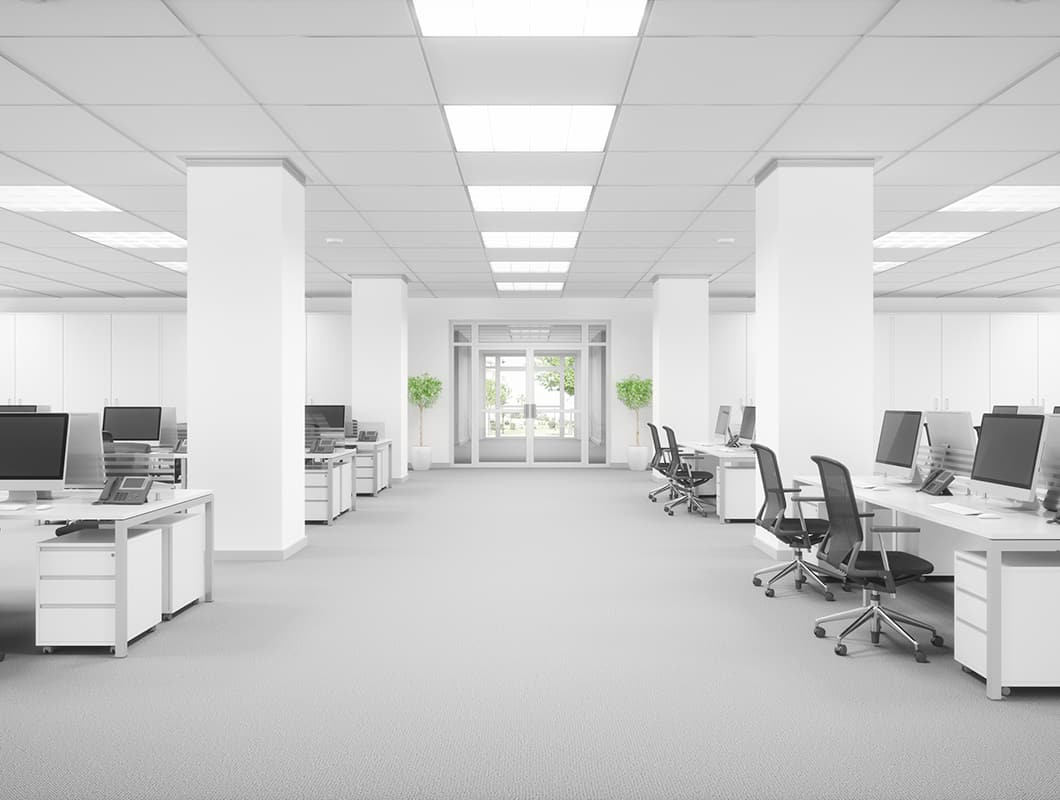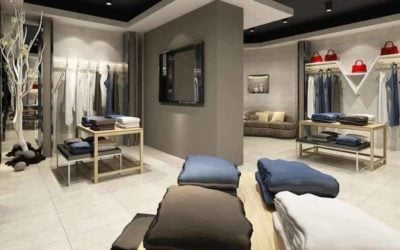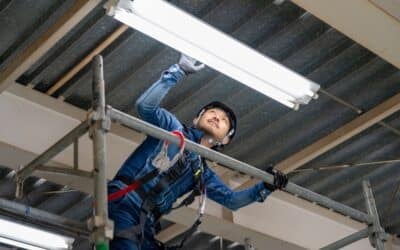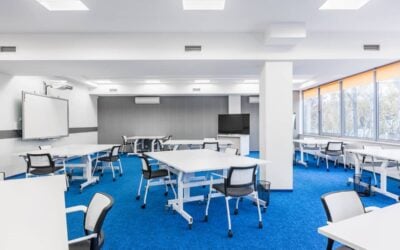Proper Lighting and Productivity
Lighting in the workplace is vital to ensure your employees are working to their full potential. Proper commercial lighting should reduce glare, improve contrast and evenly distribute light, all while increasing energy efficiency and lowering energy and maintenance costs.
Lighting accounts for close to 35 percent of electricity use in the typical commercial building, but thanks to energy-efficient lighting products, you can save 50 percent or more, all while enjoying great light quality. When designed properly, an LED circuit will approach 80 percent efficiency—meaning that 80 percent of the electrical energy consumed is converted into light and 20 percent is released as heat. As a comparison, incandescent lighting operates at about 20 percent efficiency.
Whether you are conducting a new construction or renovation project, installing LED lighting is a simple and affordable way to significantly increase your sustainability. Because LED lighting uses up to 40 percent less energy than fluorescent and can increase overall light quality, it is a perfect way for companies to help support their corporate social responsibility (CSR). This refers to the effort of developing a sustainable environment by providing economic, social and environmental benefits for all stakeholders. An employee engagement study conducted by Cone Communications revealed that 51 percent of people surveyed stated they wouldn’t work for a company who didn’t have strong social and environmental commitments.
Lighting for Humans and Tasks
Lighting is much more than a necessity for us to see—it’s responsible for how we feel, sleep and how productive we are in the office. Lighting plays a part in inspiring employees’ creative thought. Used improperly, lighting can negatively impact mood and performance, causing employees to become less productive. The Illuminating Engineering Society (IES) recommends a 30-50 foot-candle range for ambient office lighting, but most offices exceed 50 foot-candles. This is where over-lighting can become a tremendous problem. It can cause eyestrain, headaches and difficulty seeing paperwork and computer screens. Be sure to provide the proper levels to ensure employee health and wellbeing.
One way to stay away from the possibility of over-lighting is to layer your office lighting, however, each area of the office requires different lighting due to different purposes, and so it’s important to understand what you need. Ambient lighting serves as your top layer and as stated above should stay around 30-50 foot-candles. TCP LED flat panels, troffers and direct T8 tubes provide great quality ambient lighting for offices. Task lighting is in the middle. This includes desk lamps and under-shelf lighting. This provides extra lighting for specific tasks that can be used when needed. The bottom layer is your accent lighting—used to provide focal points or to add aesthetic to a space. Using these layers efficiently will decrease eyestrain, balance the lighting and create a more comfortable work environment.
Different areas of the office also require different color temperatures. Cooler color temperatures such as 5000 Kelvin, enhances employee productivity and should be used in offices and in areas containing cubicles/work spaces, while warmer color temperatures such as 2700K will create a more relaxed and comfortable feel. Middle tones, such as 3500K, should be used for conference and meeting rooms. This will create a friendly and inviting environment, while keeping workers alert and motivated.
A study conducted by Sedus surveyed office workers and asked them to assess their working environments and determine which aspects were the most important to them, and how satisfied they were with each. Lighting proved to be the most important, but with quite a bit of room for improvement.
Working habits are changing, and in the modern office, people are multi-tasking and constantly on the move. Some offices are implementing community tables and flexible workspaces, allowing employees to work in various areas of the building and not having a designated cubicle or office. Lighting needs to be able to tailor to these new trends and provide consistent lighting throughout the office.
Lighting and Circadian Rhythm
Another function of lighting is to synchronize our biological clocks. The impact lighting has on our sleep-awake cycle has a substantial influence on our health and productivity. Our light intake is responsible for how well we sleep at night and how we feel.
Lighting serves as a trigger for when we should wake up and when we should go to sleep. Poor office lighting can negatively impact our bodies and therefore decrease employee productivity and overall wellbeing. Blue light (such as 5000K) suppresses melatonin in our bodies, enabling us to have more energy during the workday. It’s also important to have as much natural light exposure as possible or to tailor the artificial lighting to mimic the natural light outside. Photo sensors and daylighting controls can sense the lighting outside, and adjust the artificial light accordingly. The whole purpose of this lighting method is to mimic the lighting of the sun to keep our bodies in our natural rhythm. When executed properly, human-centric lighting design should be able to enhance daylong focus, creativity and productivity.
Controls and Sensors
Lighting controls in offices help save energy and provide the convenience of being able to alter lighting to fit the needs of the building. There are many types of controls and sensors used in offices and other commercial buildings; each option suitable for different types of applications and buildings.
Smart Lighting Controls
Smart lighting controls have the ability to integrate the lighting and building controls for one room, a building or even an entire commercial campus. These controls learn by observing building trends and then adapt. They can automatically adjust the lighting and other systems as they change. These controls can be incorporated into a retrofit or in a spec during the planning stages of a new construction project. User capabilities with smart controls are endless—including dimming, color temperature, on/off and much more.
Human performance changes throughout the day, peaking around 10 a.m. and again later in the afternoon. Lighting can be used to support the human body to improve performance when it might naturally decrease. It also helps employees relax at the appropriate times of the day so they have enough energy to carry out their work tasks for the remainder of their work day. By installing smart lighting controls, lighting can adapt to the needs humans need to sustain productiveness.
Occupancy and Vacancy Sensors
Occupancy and vacancy sensors are the most commonly used type of sensor and very similar to one another. Occupancy sensors automatically turn the lighting on when someone comes into the area and turns off when no motion is detected for a specified amount of time (normally adjustable). Vacancy sensors are the same as occupancy other than the difference of a manual switch to turn on. The benefit to this feature is to prevent false-on occurrences to save even more energy. These are normally used in private offices, stairwells, restrooms, warehouses and conference rooms. By using occupancy or vacancy sensors, offices can cut energy use by 25 percent or more in these applications.
If you are installing any type of sensor, it’s important to remember that employees and facility managers should be trained to understand how it functions and how it should be maintained.
It’s no wonder why LEDs are on the rise in office buildings due to their human-centric capabilities efficiency, low maintenance and versatility. Whether you’re planning for a new construction or retrofit project, LED lighting is an affordable way to create a healthy, comfortable and productive environment.
Related Articles
Enhancing Retail Spaces with LED Lighting Solutions
Effective retail lighting is essential for attracting and retaining customers, as it influences customer behavior, mood, and overall shopping experience. The Impact of Light Design on Customer Behavior Lighting plays a pivotal role in shaping how customers interact...
Lighting Maintenance in Industrial Facilities
Managing a warehouse facility is more than just keeping shelves organized. The lighting that constantly surrounds the people and products play a big part in the well-being of the business. Lighting maintenance in industrial facilities helps ensure safety, reduce...
Improve Learning Environments with LED Lighting Solutions
Creating an optimal learning environment requires more than just desks and whiteboards – lighting plays a crucial role in shaping students' focus, energy levels and overall well-being. Schools that insist on high-quality LED lighting solutions can enhance student...
